As one might expect, the woody plant population here at Acadiana Park is segregated into three distinct communities in accordance with the three major ecosystems which converge here. Up on the prairie terrace, the old coastal tallgrass prairie community is but a faint memory, being cleared for agricultural purposes back in the late 18th century. Along the steeply graded escarpment (actually, an old relict bank of the ancient Mississippi River), which possesses lighter, better-drained soils, trees such as winged elm, cherrybark oak, and sweet pecan, and shrubs such as red buckeye and American beautyberry occur. Forty-five feet down the face ofthe escarpment, the floodplain forest begins, and features American sycamore, American elm, baldcypress, hackberry, green ash, green hawthorn, bitter pecan, and dwarf palmetto. Then there are other species such as coast live oak, elderberry, water oak, and sweet gum, as well as "escaped"exotic species like Chinese tallow, Chinese privet, wax-leaf ligustrum, Japanese honeysuckle, and Japanese climbing fern which find homes throughout each community.
PAGE 1 — Aceraceae • Anacardiaceae • Aquifolieaceae • Arecaceae • Asteraceae • Berberidaceae • Caprifoliaceae • Clusiaceae • Cornaceae • Cupressaceae • Ebenaceae • Euphorbiaceae • Fabaceae • Fagaceae • Hamamelidaceae • Hippocastaneaceae • Juglandaceae
PAGE 2 — Lauraceae • Moraceae • Myricaceae • Oleaceae • Platanaceae • Rosaceae • Rubiaceae • Salicaceae • Styracaceae • Ulmaceae • Verbenaceae
Family Aceraceae
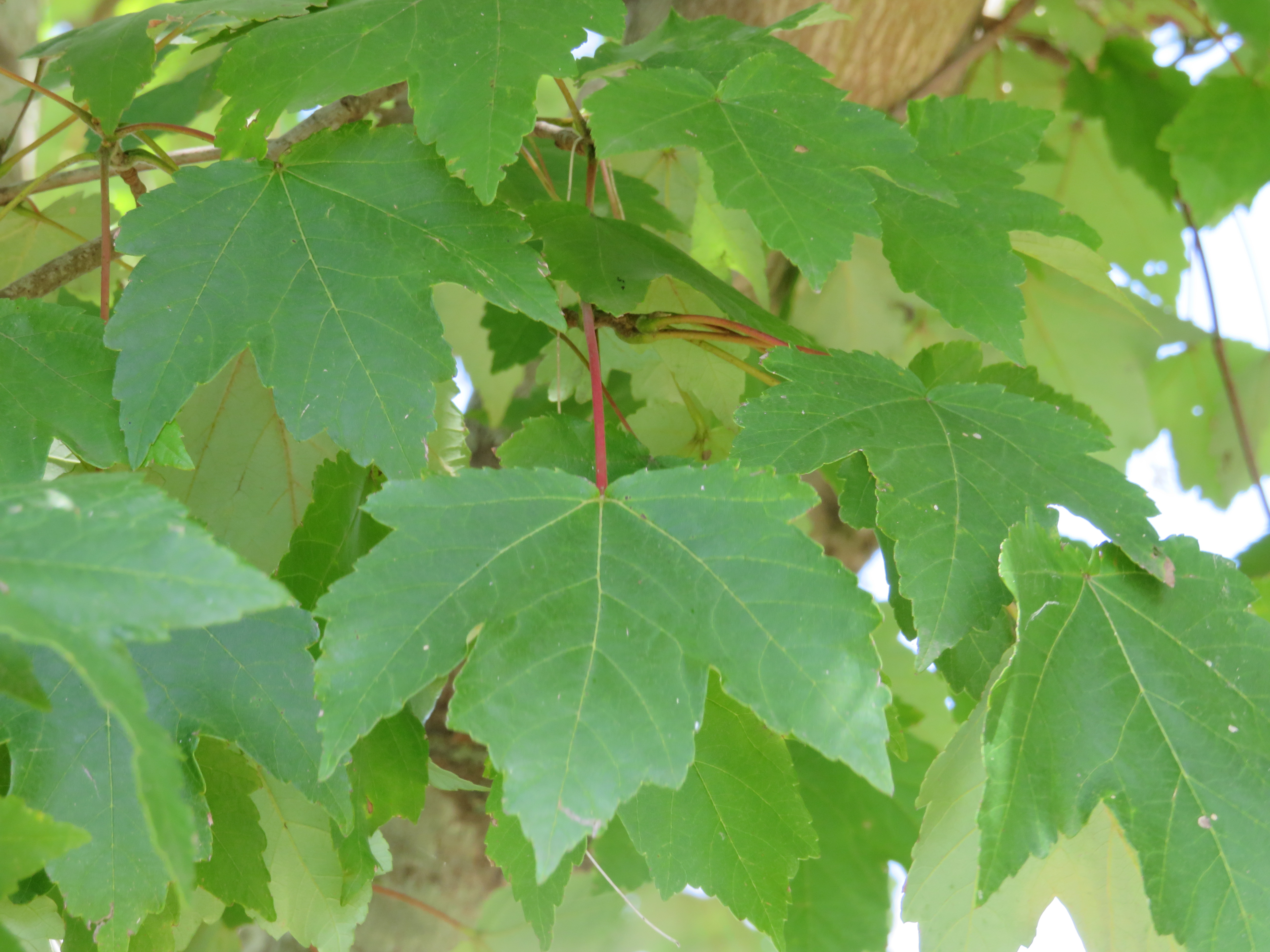 |
Red maple - Acer rubrum
One of the most populous species within the nearby Atchafalaya Basin. Within the climax-stage floodplain forest here at Acadiana Park, however, this
secondary successional species can barely find a place, and is mostly limited to brighter forest edges. |
Family Anacardiaceae
| |
Dwarf or Shining sumac - Rhus copallinum
Occurs on woodland edges up on the prairie terrace. This small tree possesses the brightest (red) fall color of any of our native south Louisiana
species. Its terminal clusters of small, sour fruits provide winter food for hermit thrushes and others. |
Family Aquifoliaceae
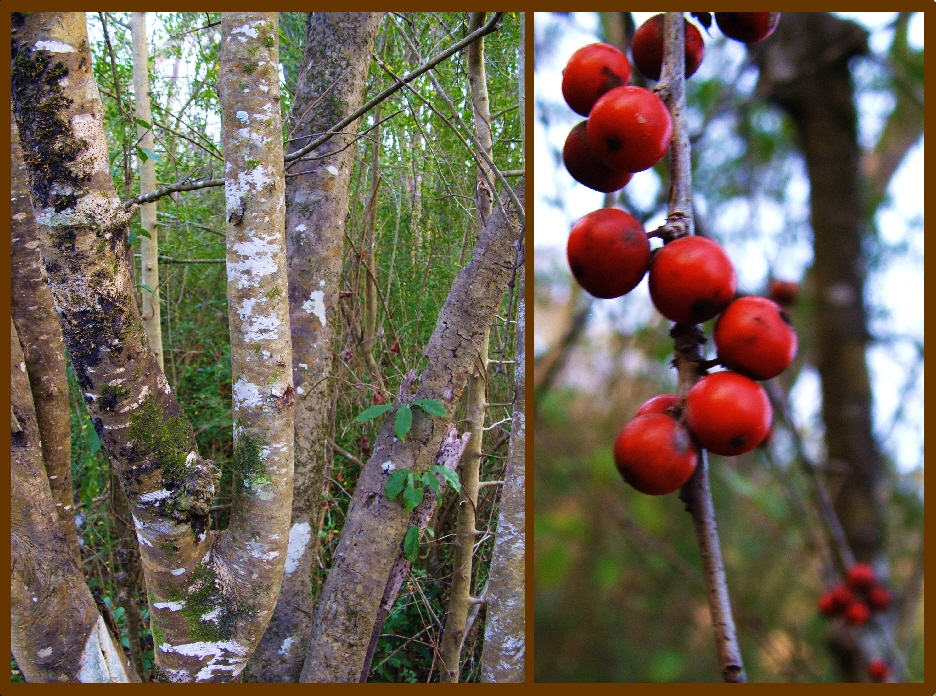
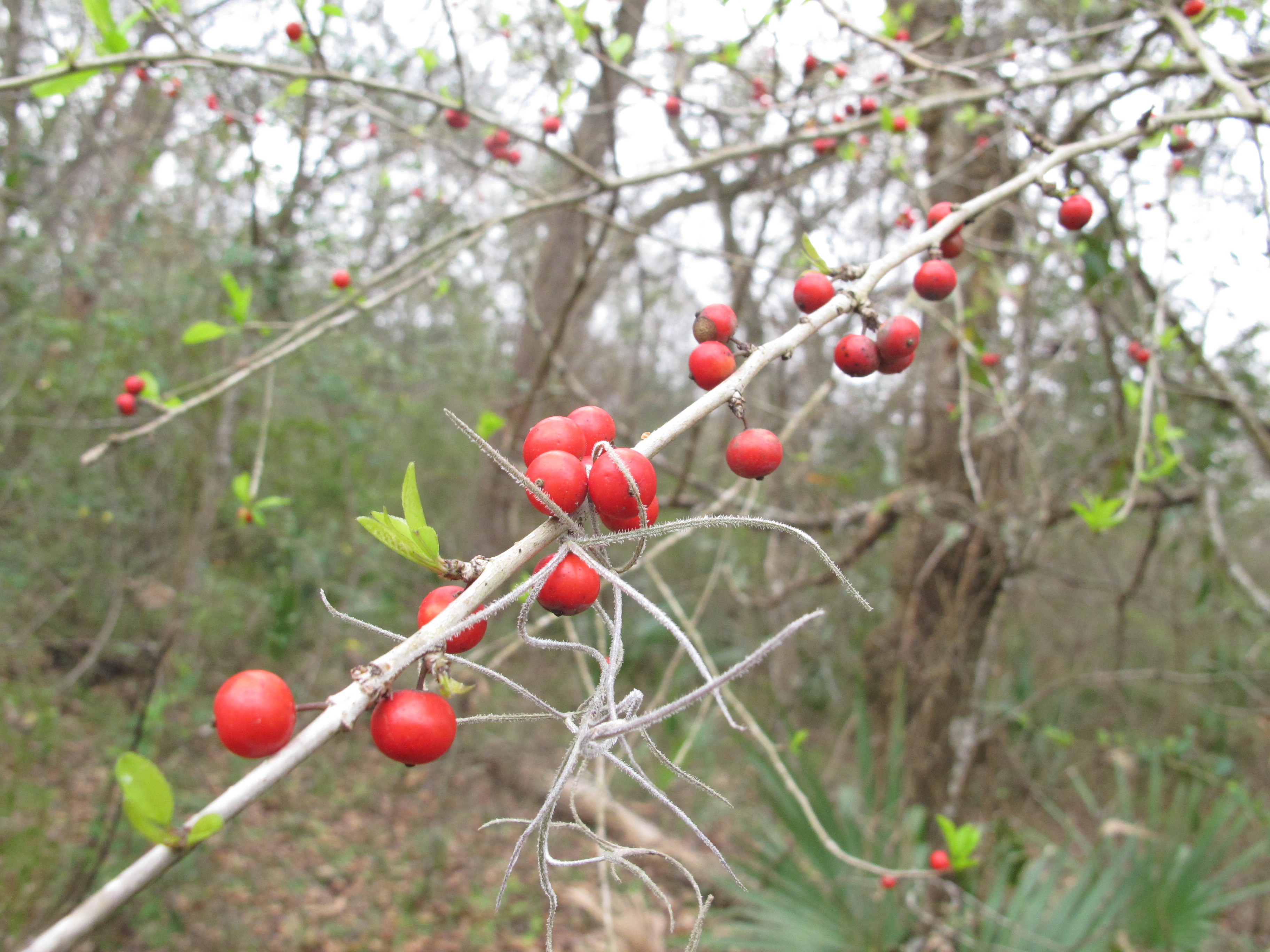 |
Deciduous holly - Ilex decidua
Occurs as a fairly common understory shrub in the floodplain forest here - even though it much prefers more open, sunny locales. During the winter
months, it is easily identified by its ash-gray, leafless branches which are chock full of red holly berries (on female plants only). |
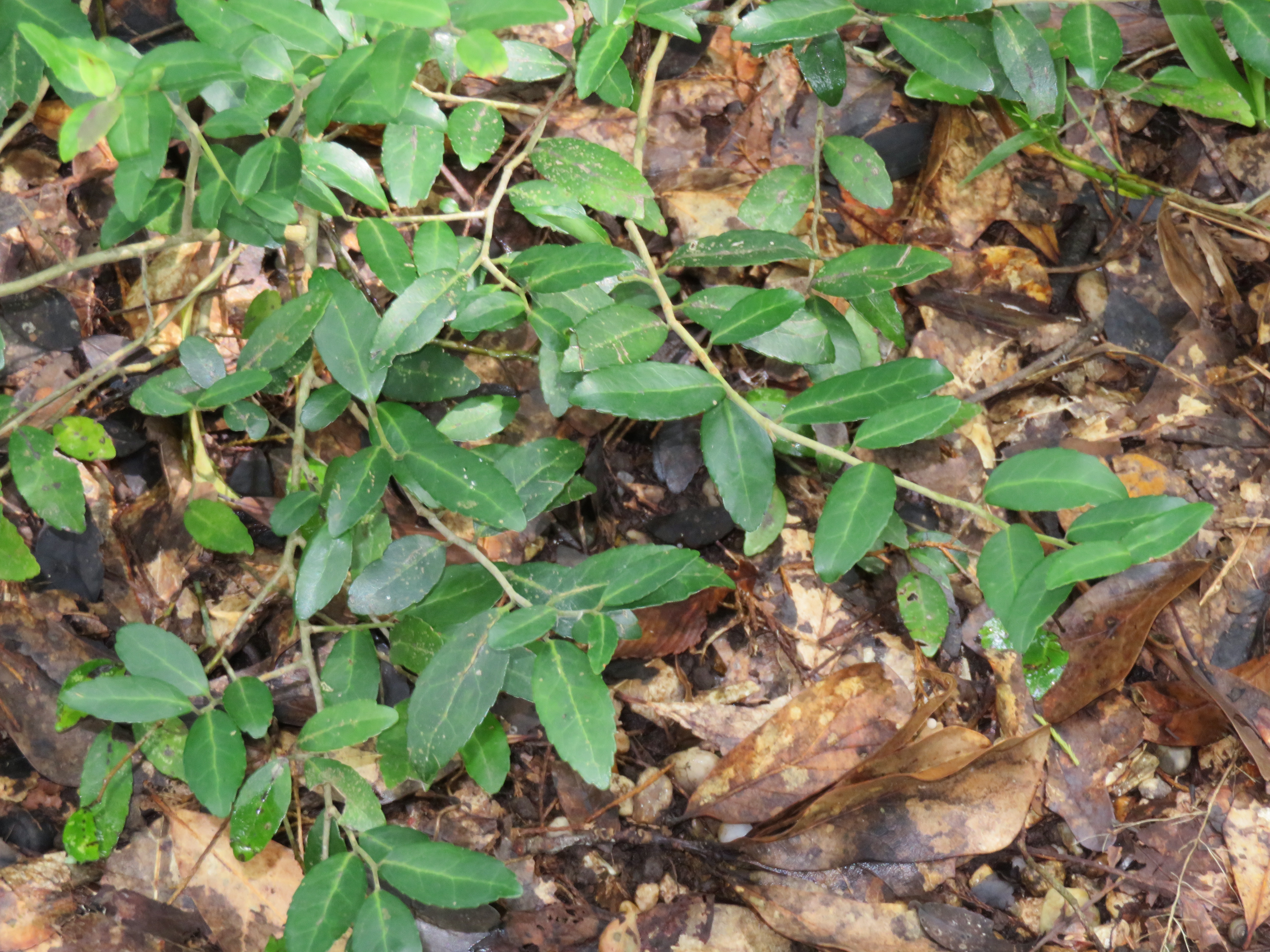
|
Yaupon holly - Ilex vomitoria
Sparsely present within all three major habitat divisions: prairie terrace, escarpment, and floodplain forest. This small, evergreen tree possesses
thick, tiny, oval leaves. Females produce multitudes of small, transluscent-red fruits during the winter months. Here, the few specimens of this
holly undoubtedly originated through songbirds (droppings). |
Family Arecaceae (Palmae)
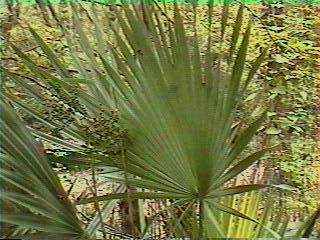
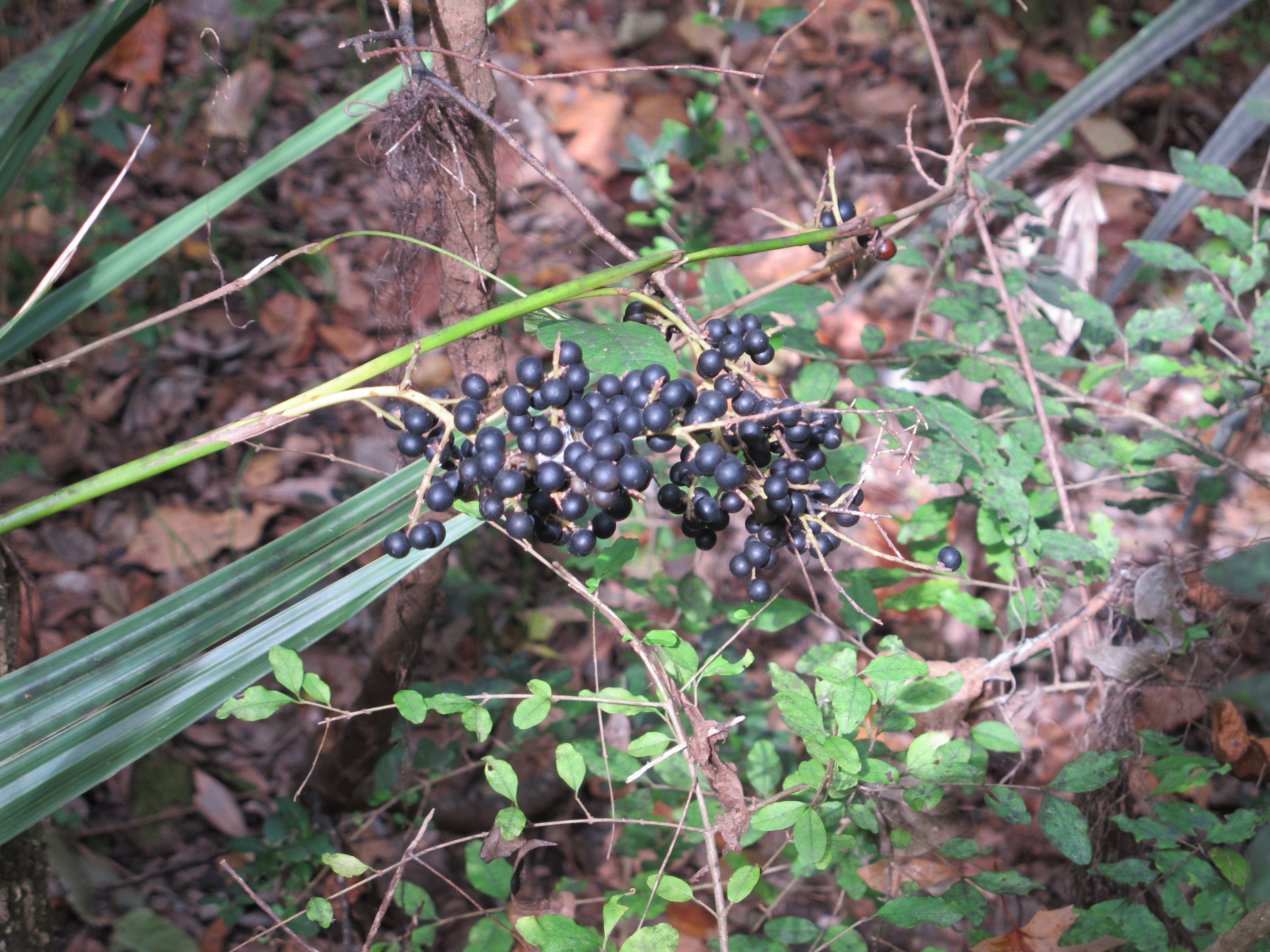
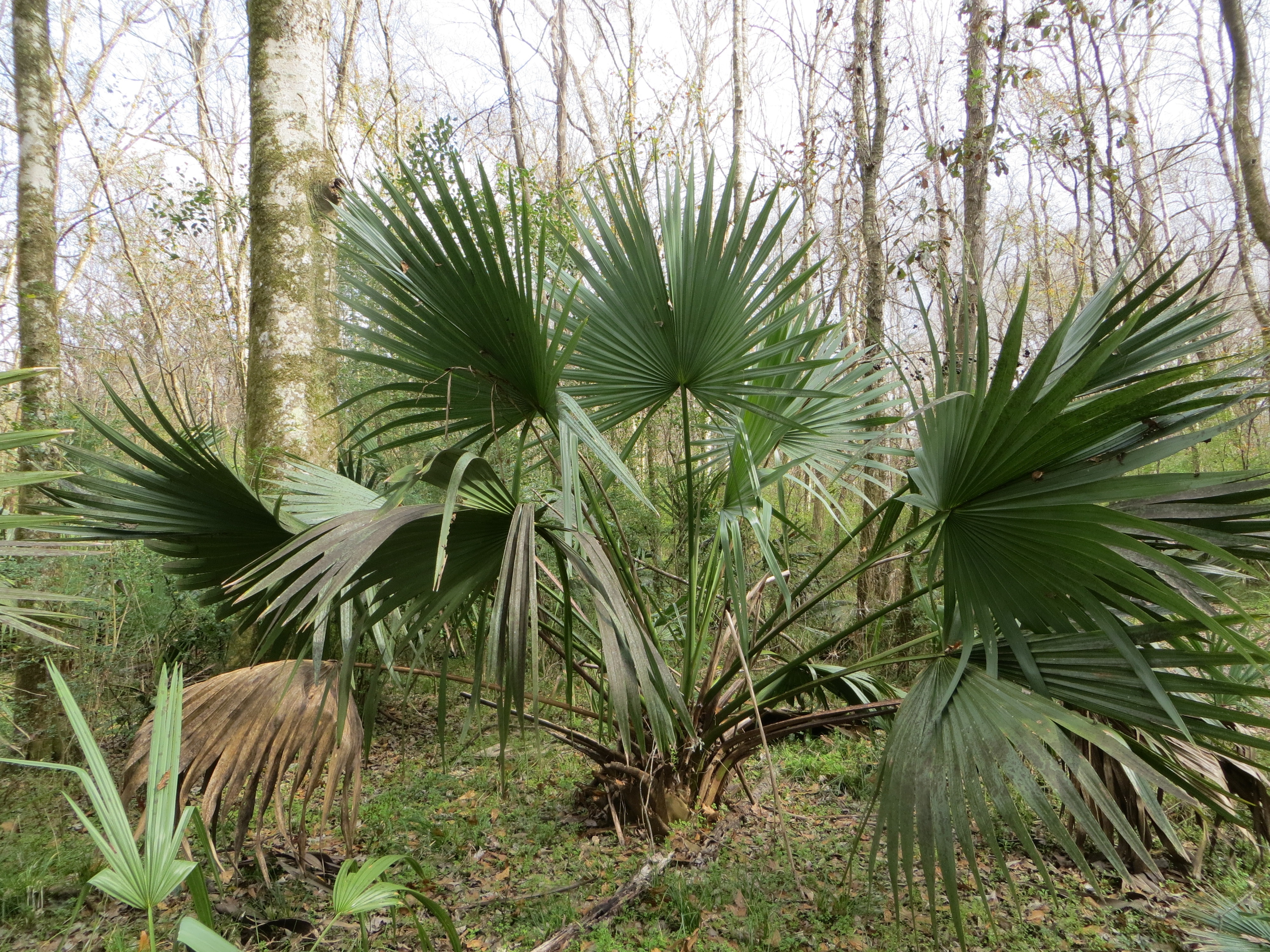 |
Dwarf palmetto - Sabal minor
The only true native shrub inhabiting the floodplain forest here. Its spikey, fan-shaped, evergreen foliage causes it to stand out amongst the thickets
of exotic Chinese privet which occupies the same habitat. Black, shiny palmetto fruits are produced on long spikes, and serve as a primary source of
winter nutrition for birds and mammals alike. Attakapas and other south Louisiana indian tribes used these tough palmetto leaves as a covering for
their huts. |
Family Asteraceae
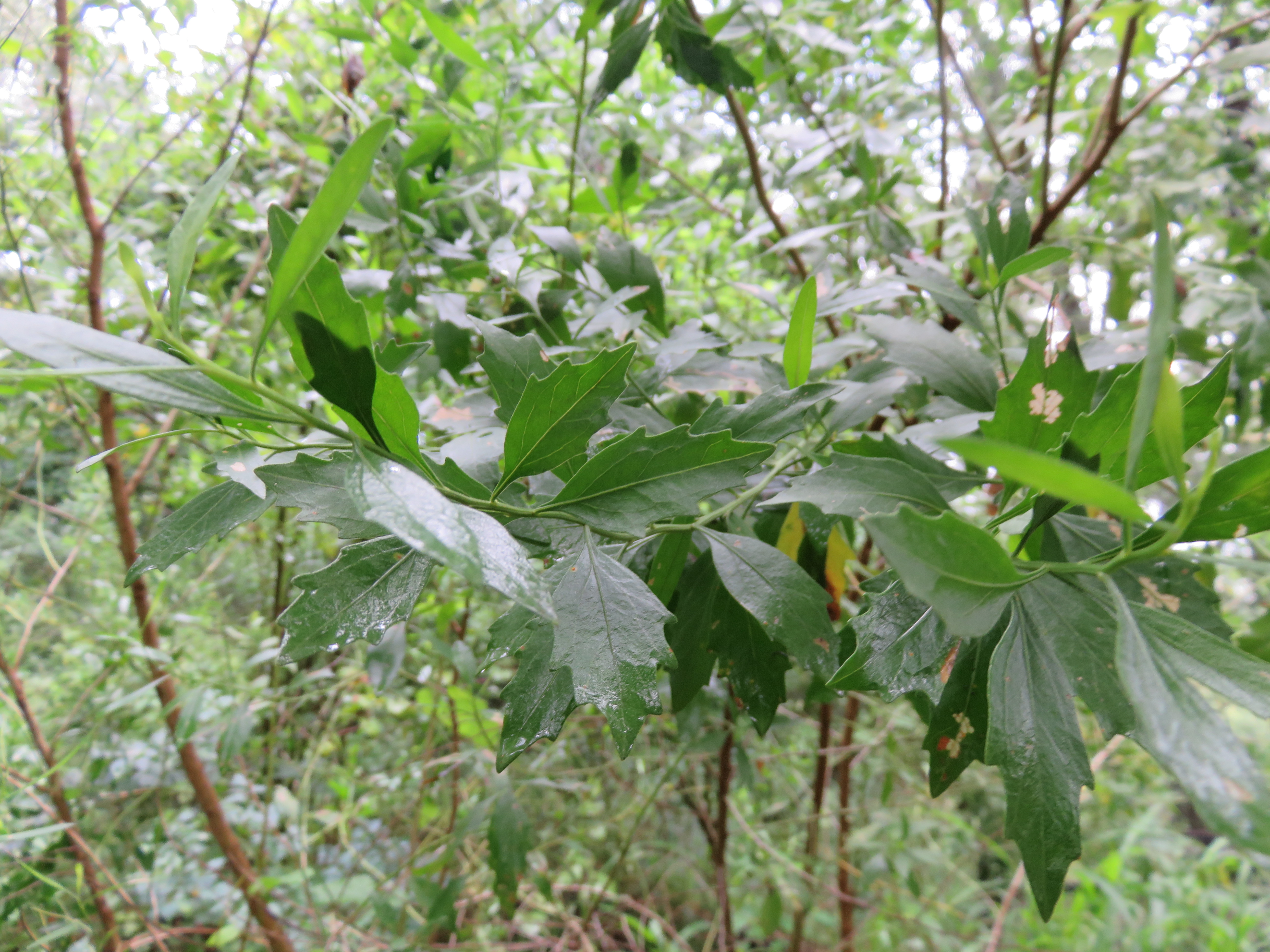
|
Groundsel bush - Baccharis halimifolia; cajun=Manglier (mong-lee-AY)
Occurs in sunny margins up on the prairie terrace only. Leaves of this large shrub were used medicinally by early Cajun settlers, who called it
"manglier" During the winter months, warblers, kinglets, and gnatcatchers can often be seen on this evergreen shrub, picking off scale-type
insects that infest the bark. |
Family Berberidaceae
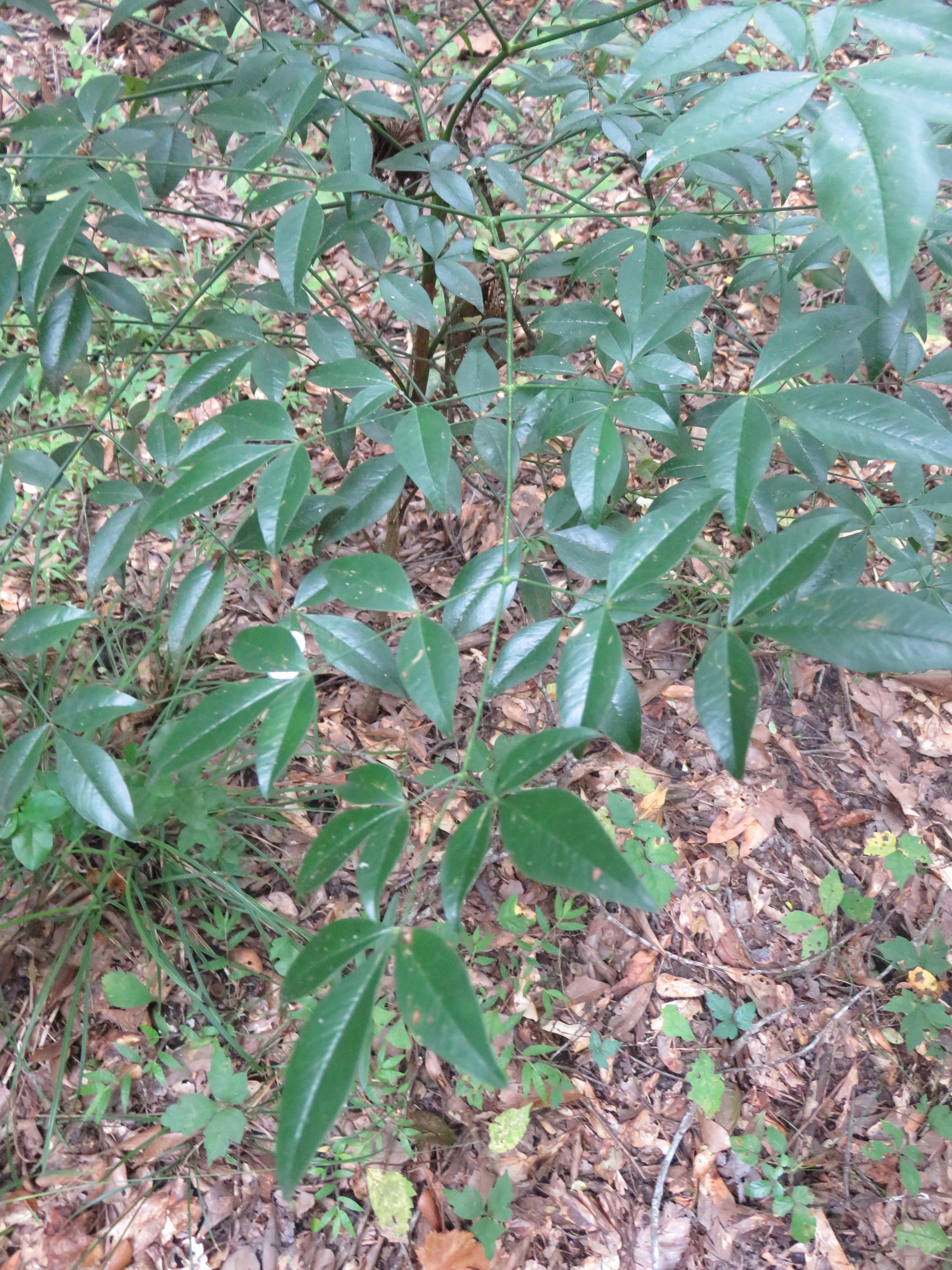 |
Nandina "Heavenly bamboo" - Nandina domestica; bird-introduced exotic
Occurs on woodland edges up on the prairie terrace. This small tree possesses the brightest (red) fall color of any of our native south Louisiana
species. Its terminal clusters of small, sour fruits provide winter food for hermit thrushes and othersis very sparingly present within the floodplain
forest. Surely, this exotic shrub arrived here via songbird dispersal from neighboring suburbia, where it is commonly planted as an ornamental. |
Family Caprifoliaceae
Family Clusiaceae
| |
St. Andrew's cross - Hypericum hypericoides; cajun=L'herb a Chien (LOB-ah-she-an)
Occurs along woodland edges on the escarpment and prairie terrace. This small shrub produces small, 4-petaled, yellow blooms throughout the summer
months. Called "l'herb a chien" by Cajuns, it was once used medicinally. |
Family Cornaceae
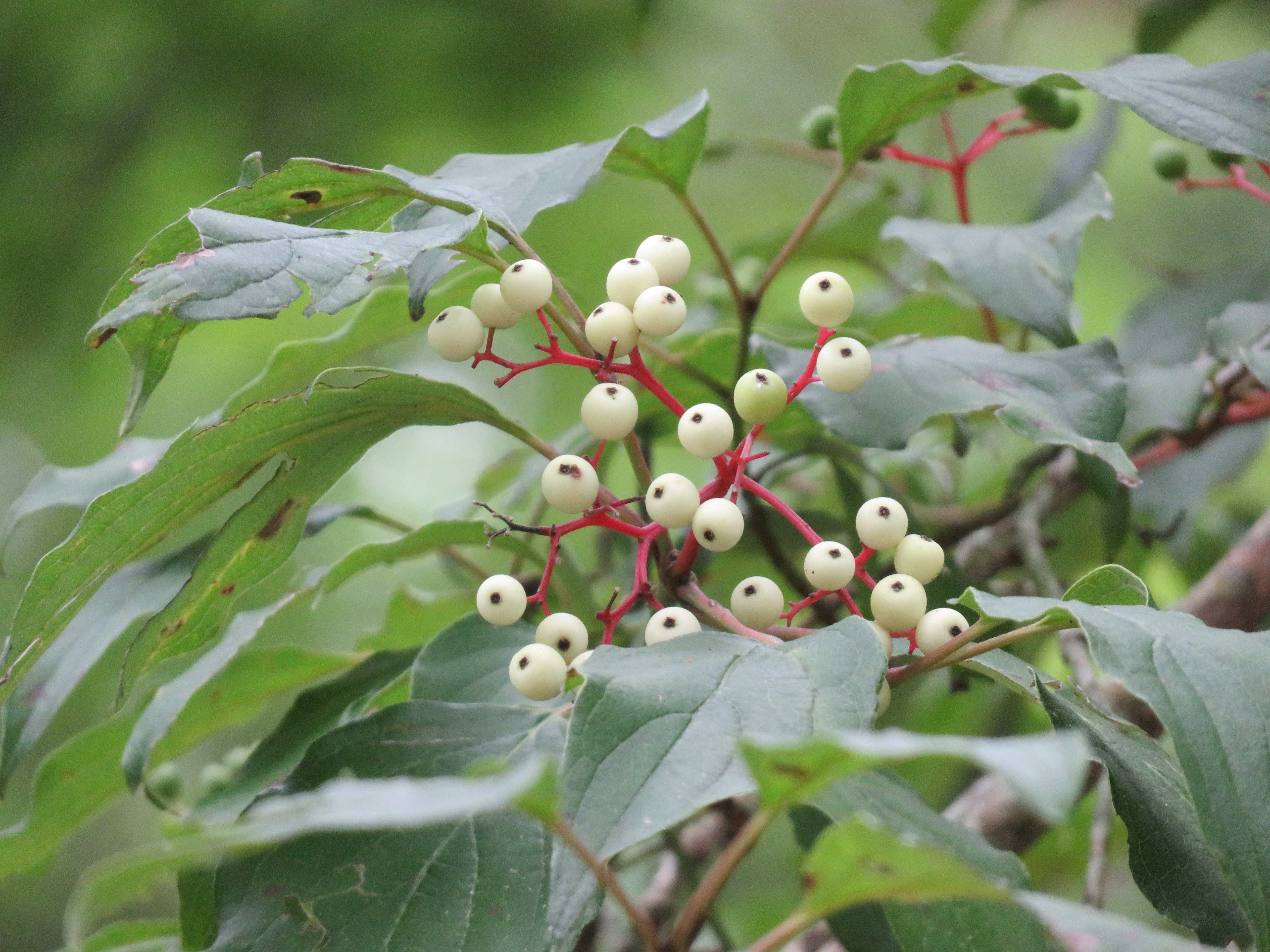
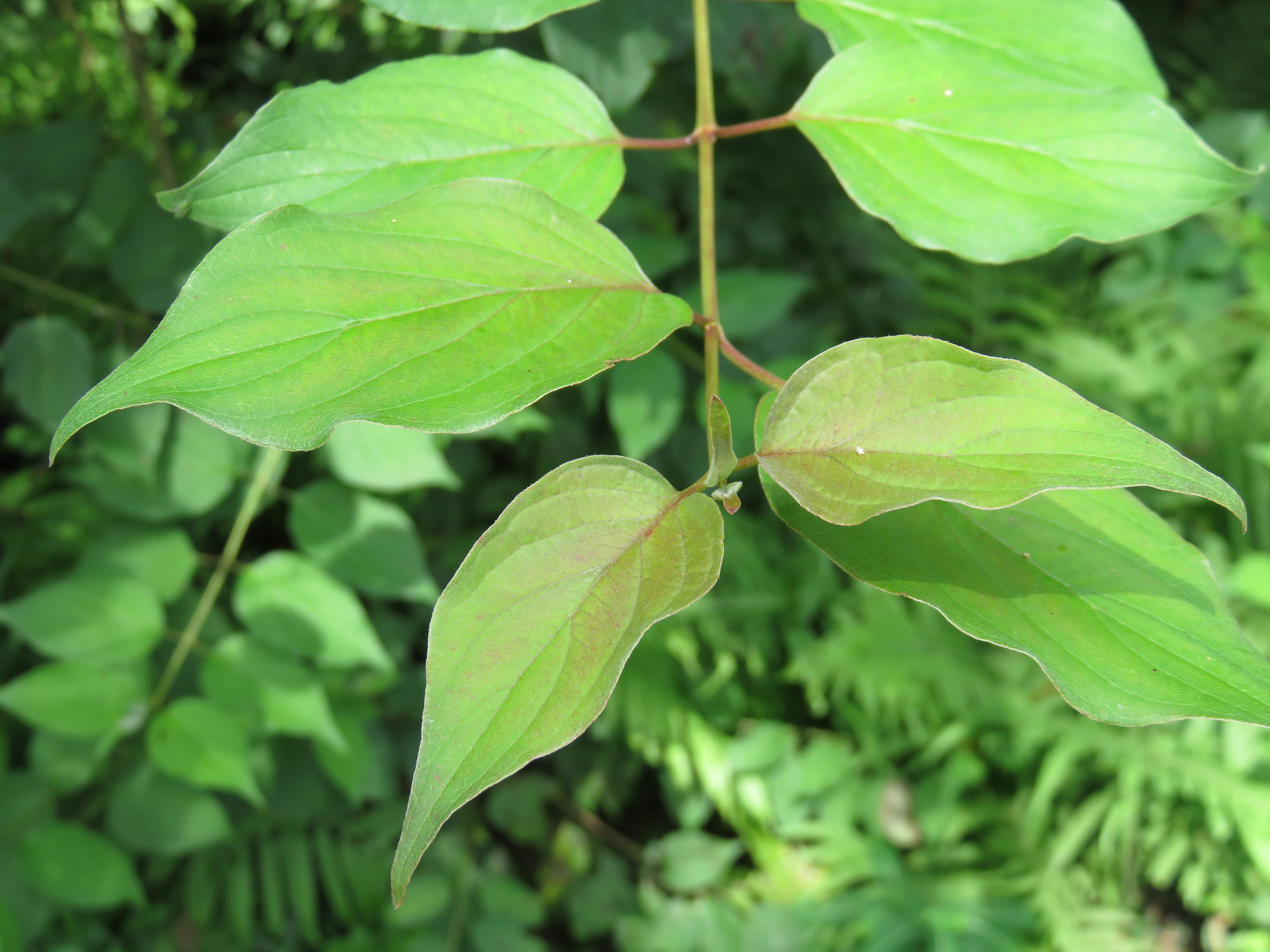 |
Rough-leaf Dogwood - Cornus drummondii
Also known as "swamp dogwood", this small, sun-loving tree most often occurs along sunnier woodland edges throughout the park. Ecologically,
rough-leaved dogwood replaces the showier and better-known flowering dogwood (Cornus florida) in wetter, more alluvial habitats such as Acadiana Park
and the Atchafalaya Basin. As is the case with flowering dogwood, rough-leaved dogwood fruits are exceedingly nutritious to fall-migrating birds - so
much so that we rarely find any fruit left on the trees by late October! |
Family Cupressaceae
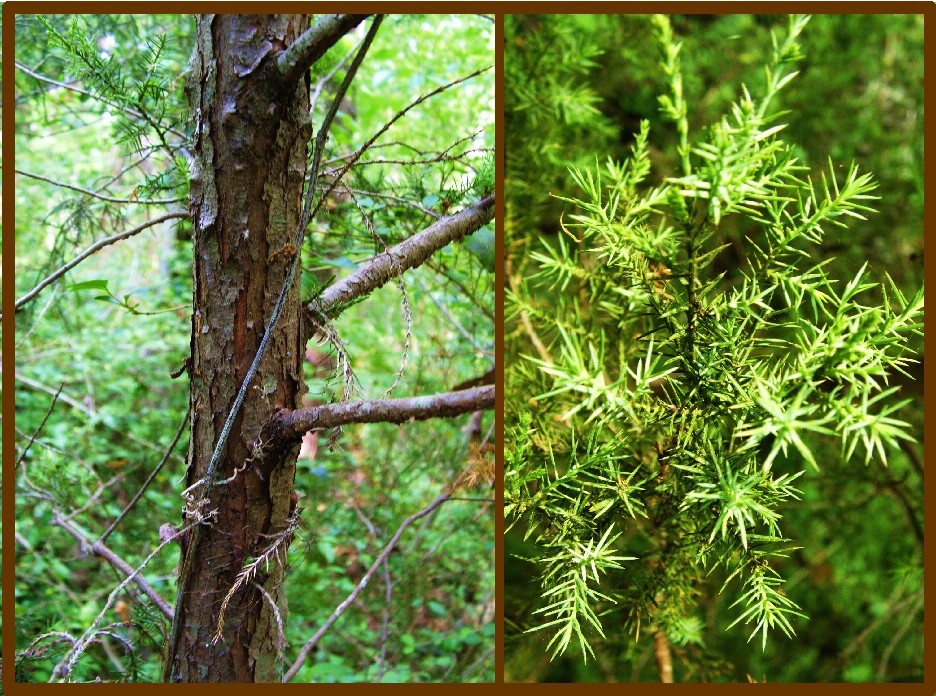
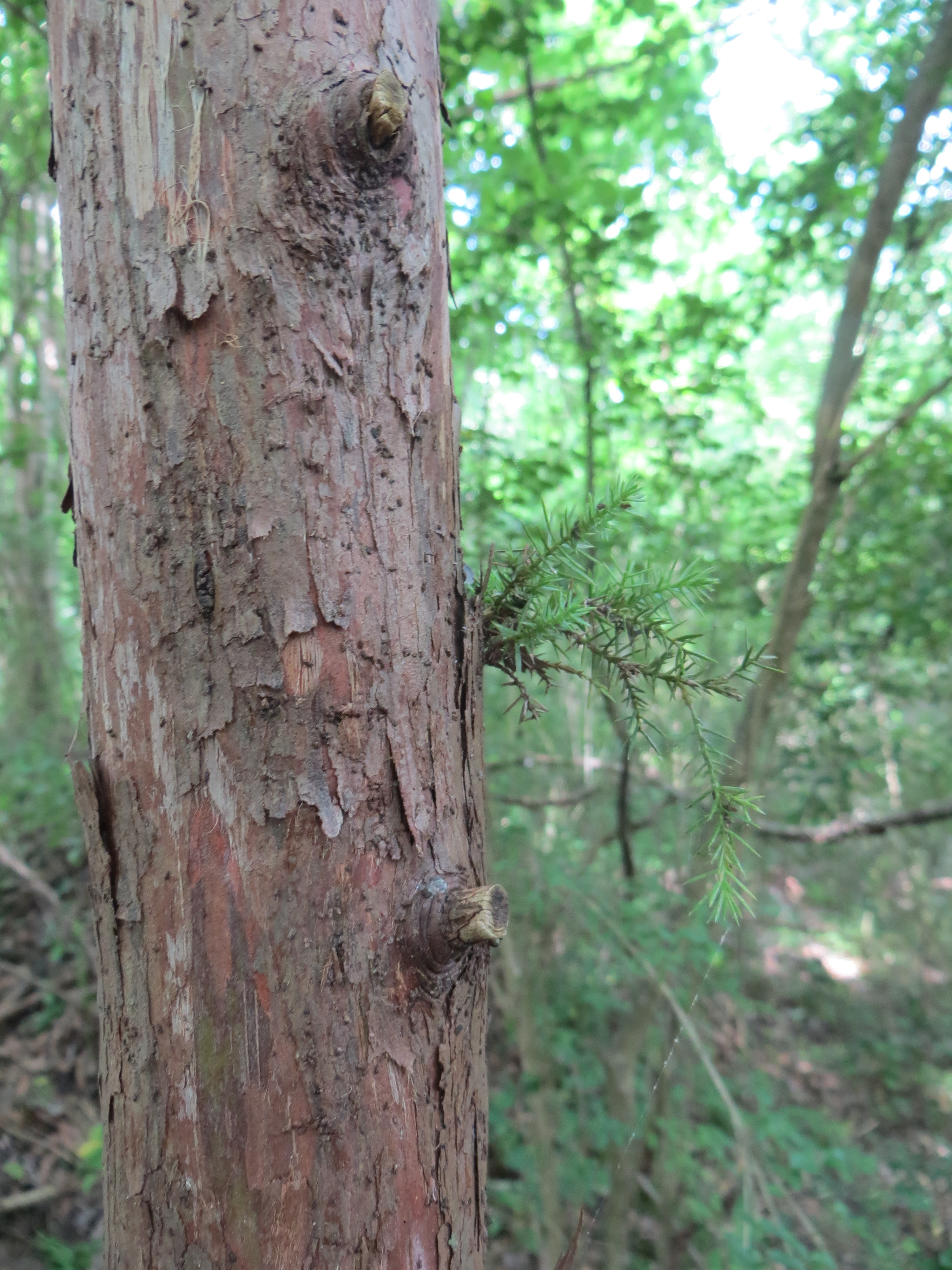
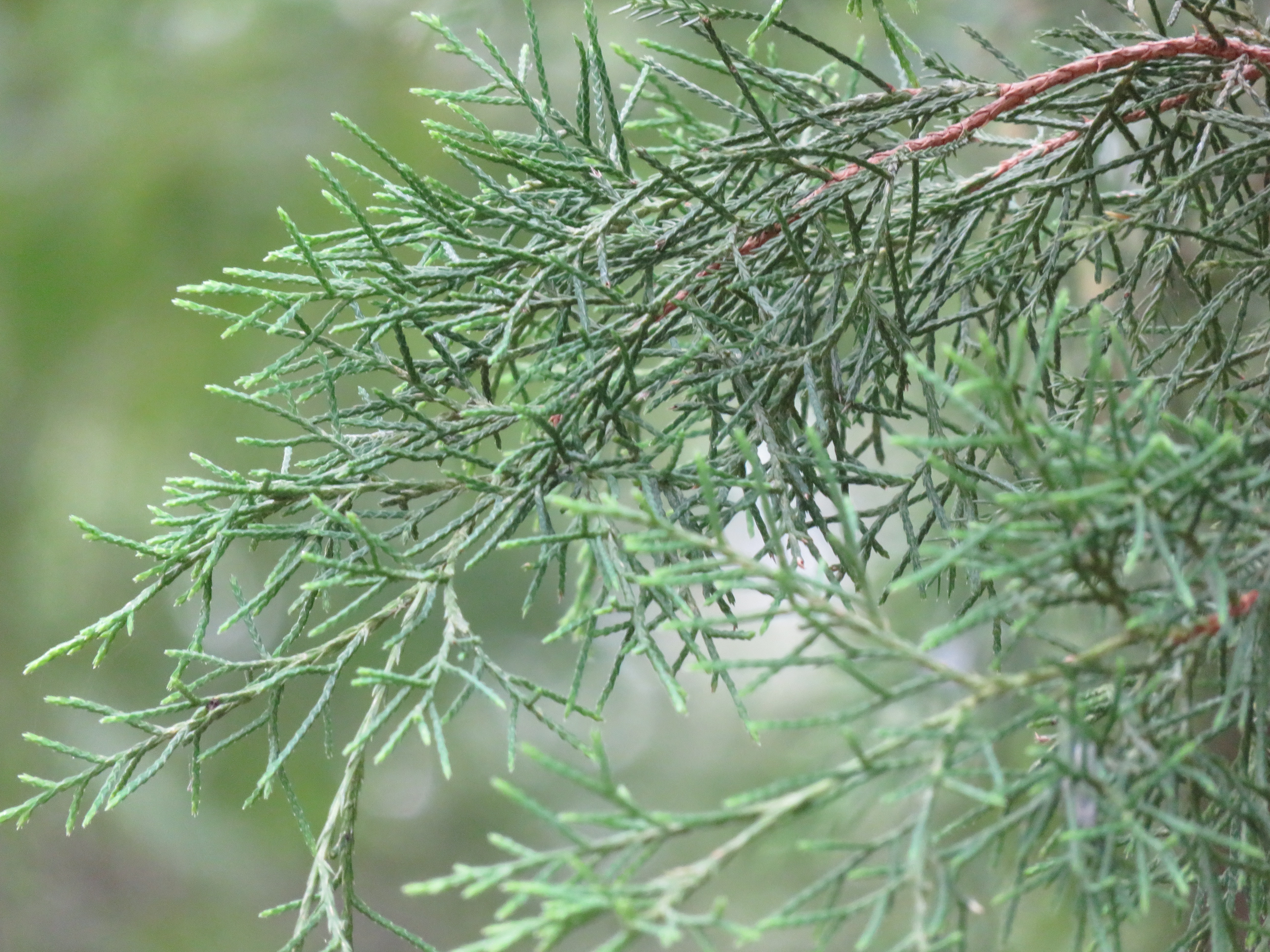 |
Eastern redcedar - Juniperus virginiana
It is a coniferous evergreen native to eastern North America growing 16–65 feet tall with a short trunk. It can also be a bush if grown in poor soil.
The bark is reddish-brown. The leaves are sharp and needle-like. The seed cones are 3–7 mm long with blue looking berries that have a wax coating. The
birds eat the berries in the winter and disperse the wingless seeds. |
Family Ebenaceae
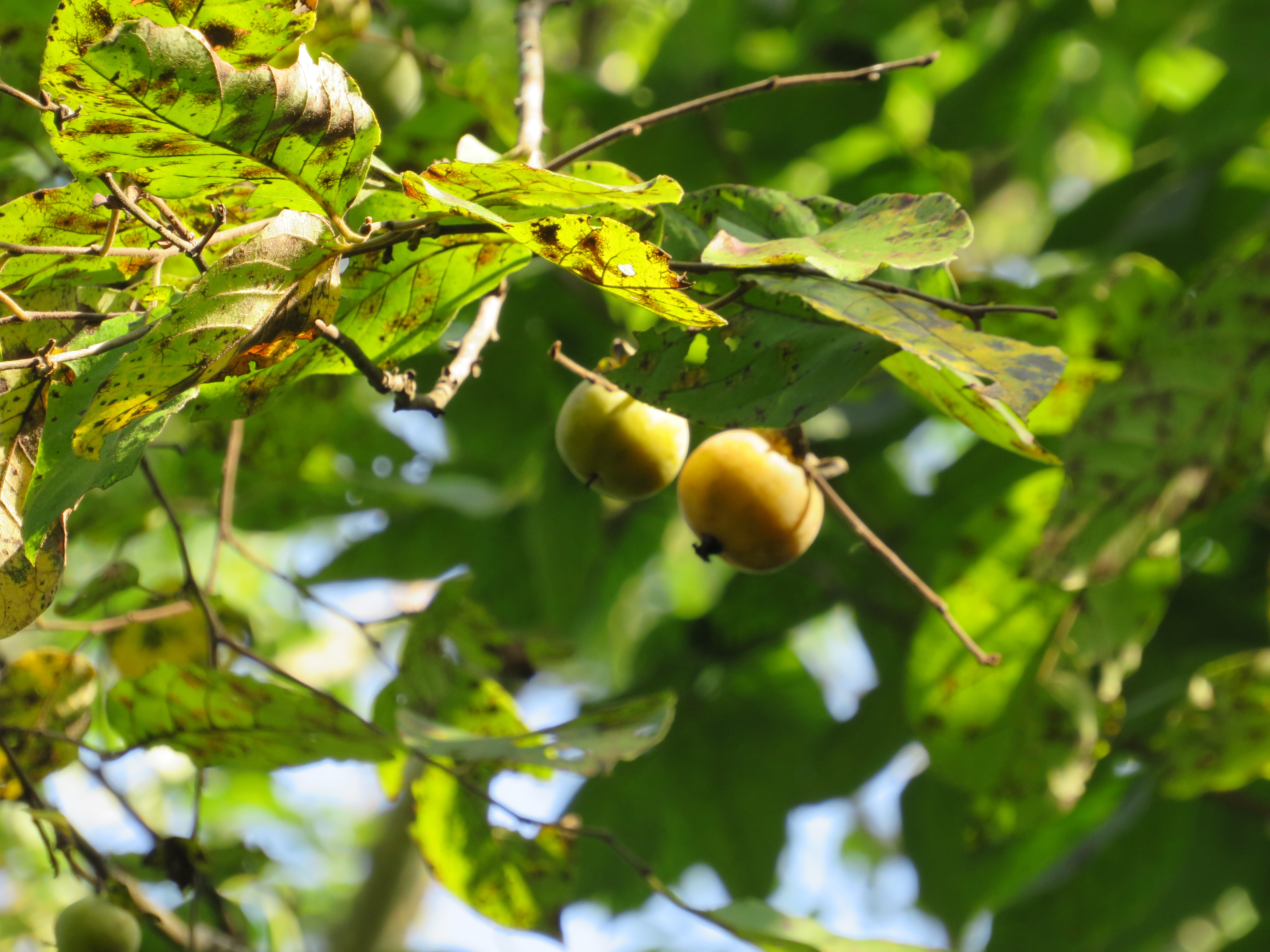
|
American persimmon - Diospyros virginiana; cajun=Plaquemine (plock-MEAN)
Can and does occur within all local habitats. Fruits of this tree are eagerly sought by birds and mammals alike. We've even noted Ruby-throated
Hummingbirds sipping nectar from holes made in the fruit by Blue Jays. Persimmon leaves are high in vitamin C, so much so that a tea was once made
from them. |
Family Euphorbiaceae
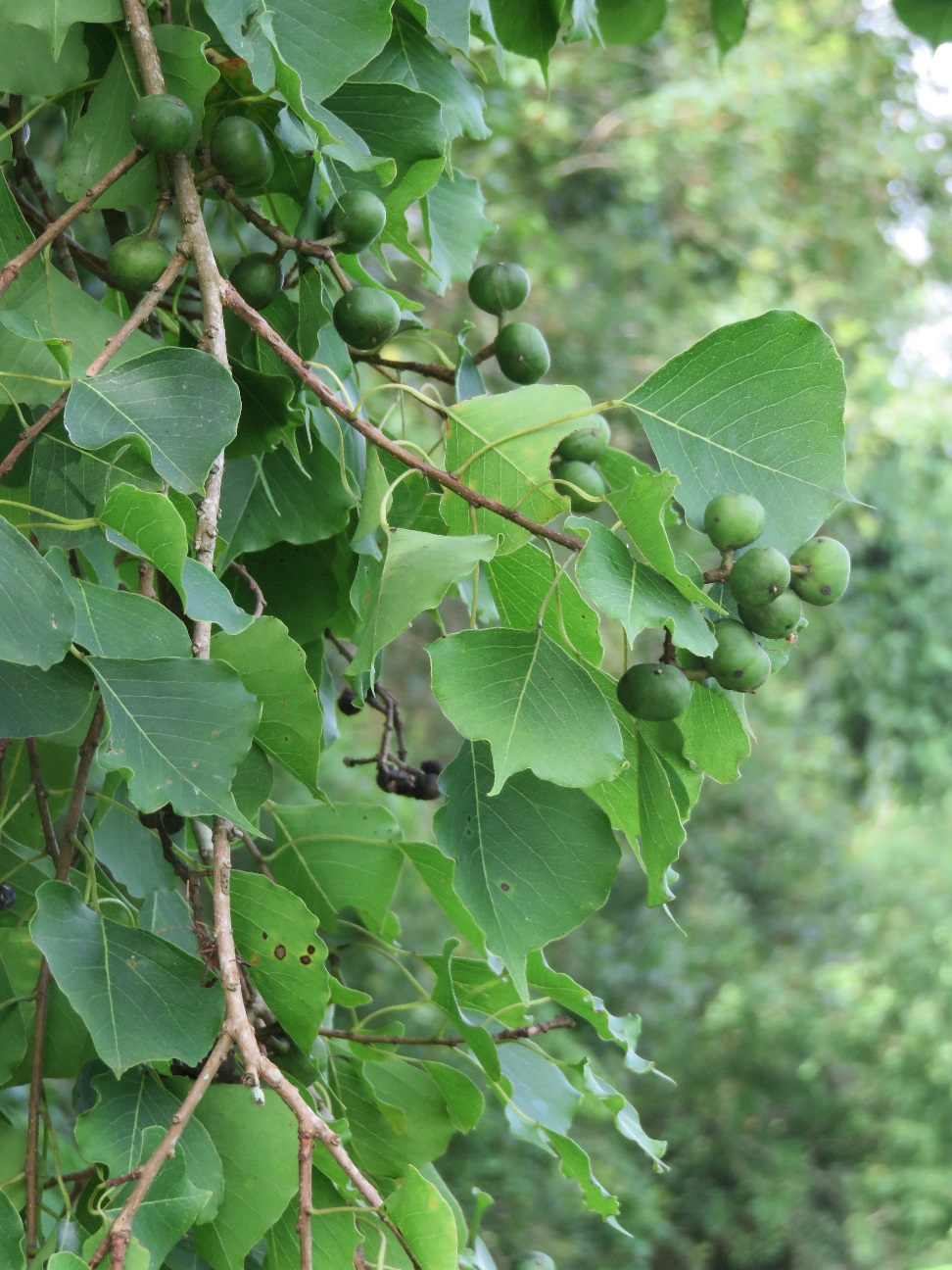 |
Chinese Tallow Tree - Sapium sebiferum; bird-introduced exotic
An extremely weedy exotic tree which plagues dozens of habitats in Louisiana and other gulf coastal states. On the plus side, since 1995 we've
recorded over 30 species of wintering birds using the fruits of this tree. |
Family Fabaceae
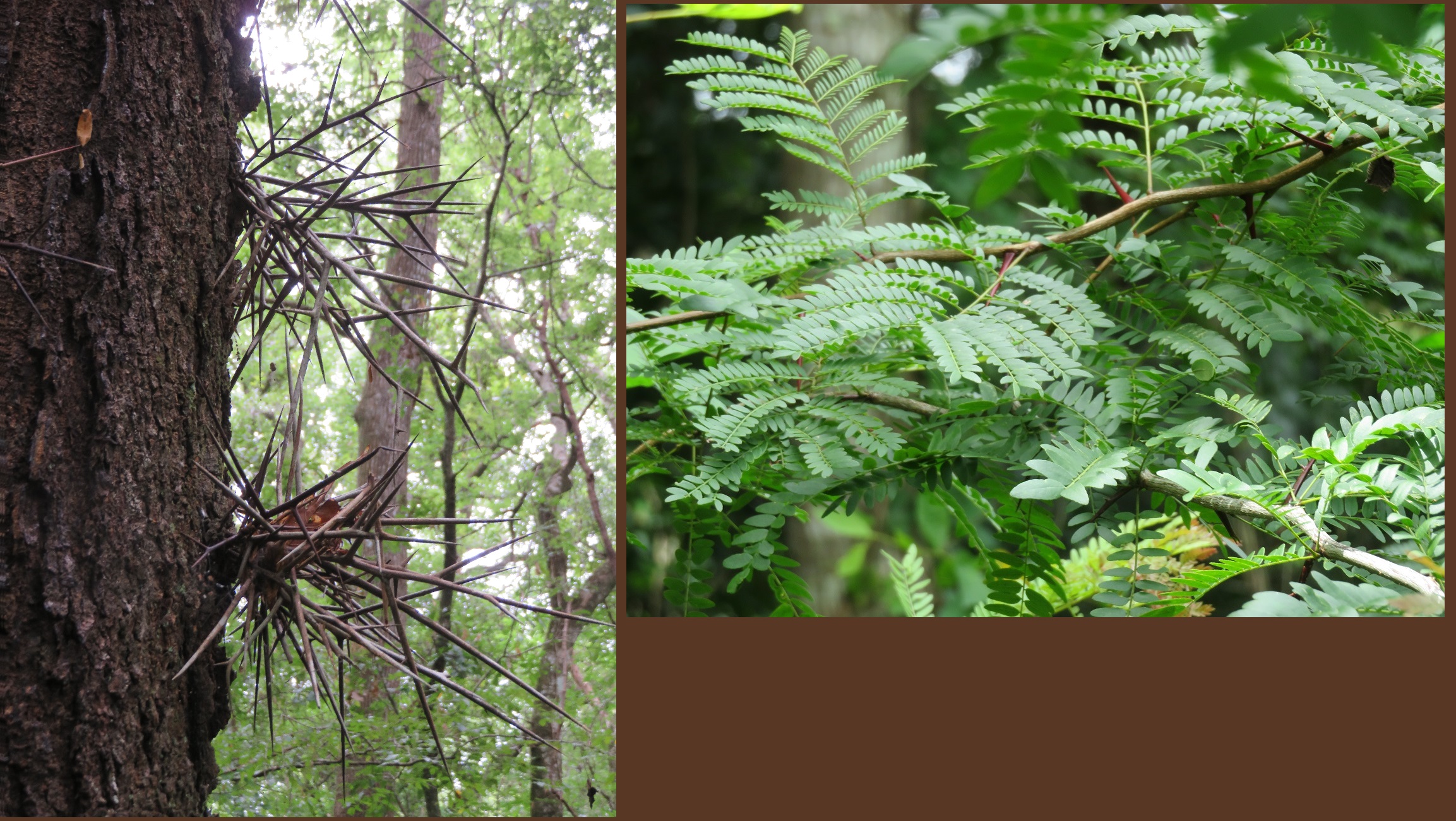 |
Honey Locust - Gleditsia triocanthos
Sparingly distributed within the floodplain forest here. Known primarily by the gargantuan thorns which adorn its trunk and branches, honey locust
foliage harbors a tiny species of larval moth (worm) during the spring months, which causes migrating vireos, warblers and others to flock to this
tree during that time. |
Family Fagaceae
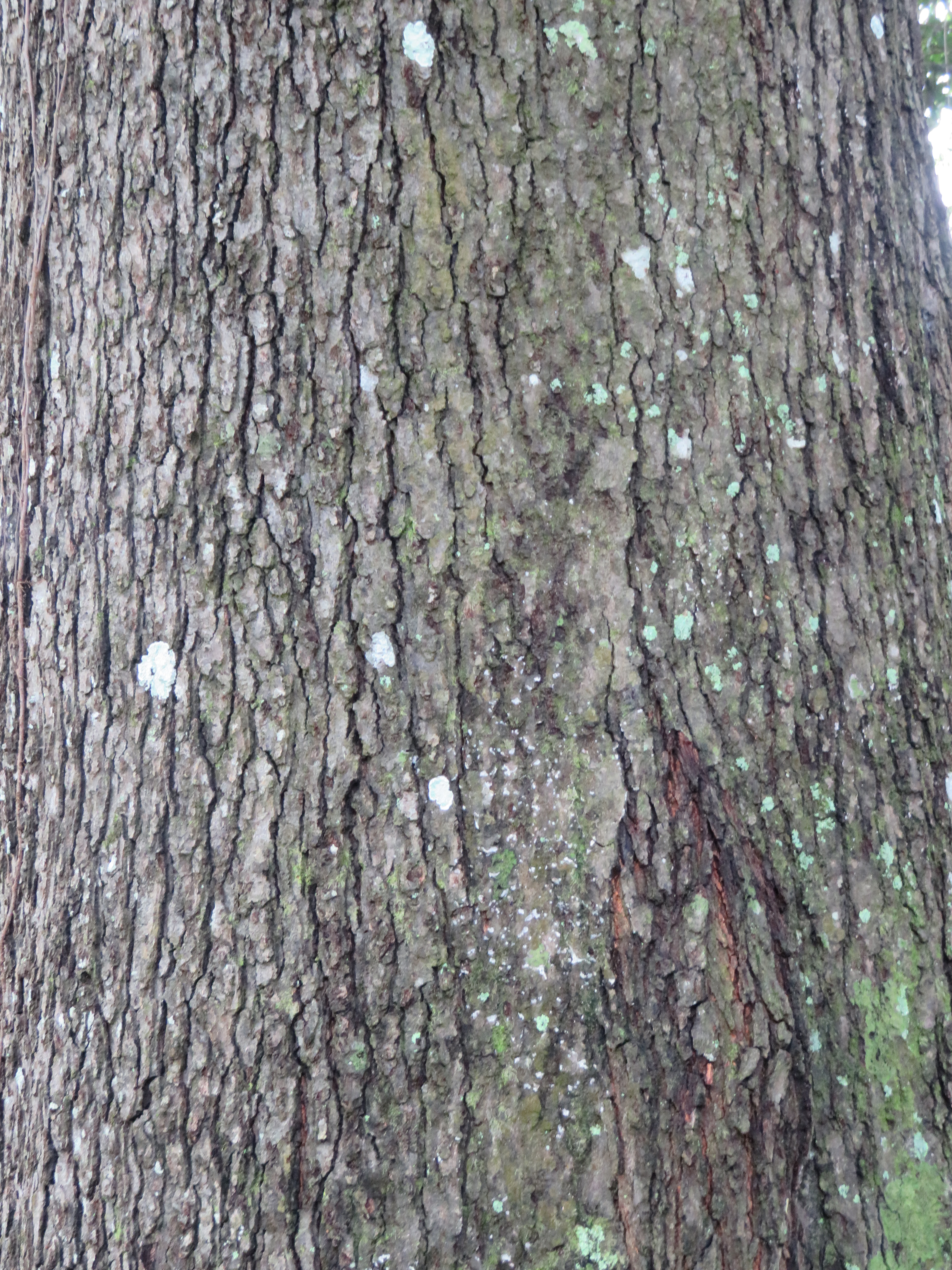
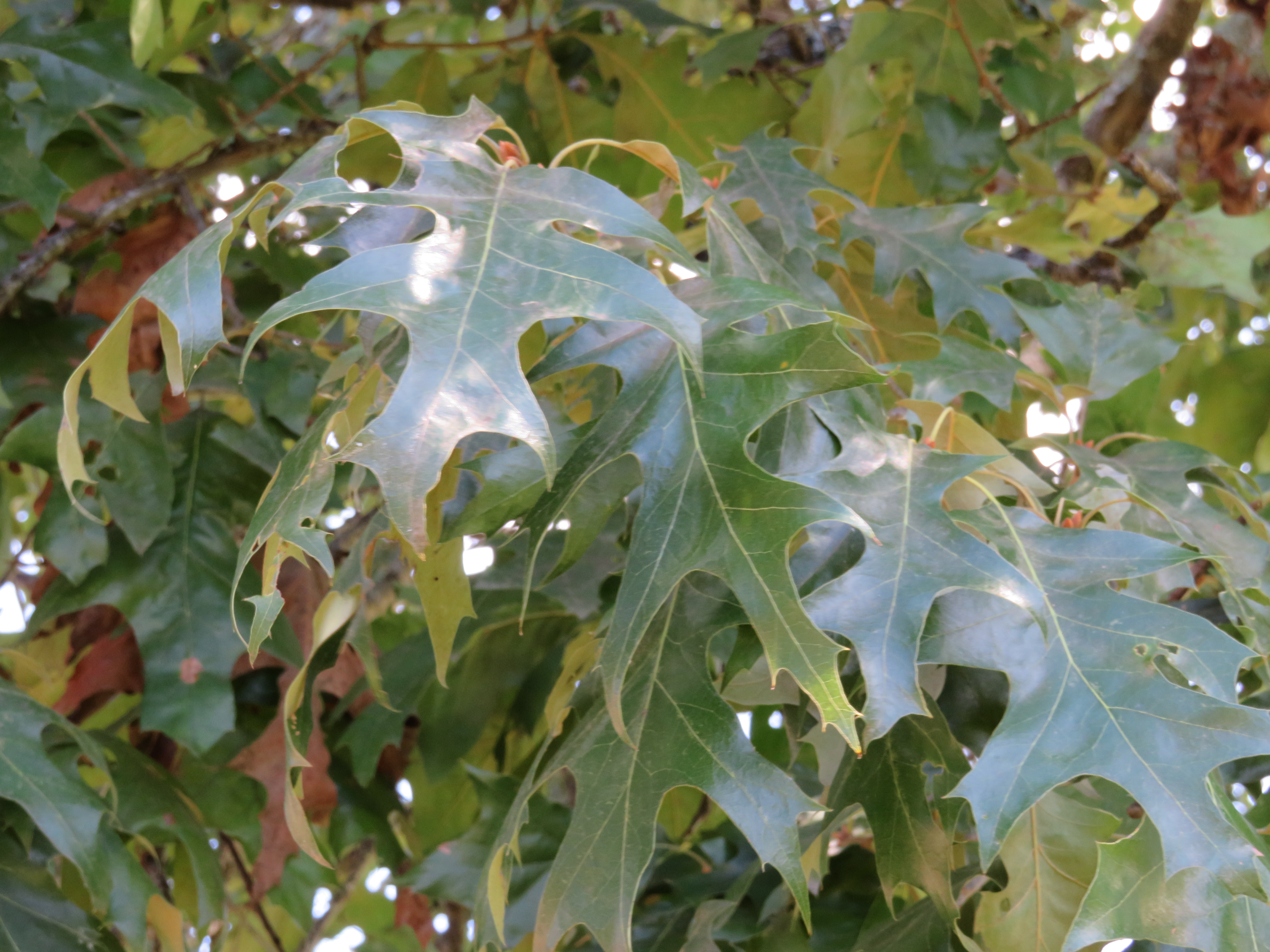 |
Cherrybark Oak - Quercus pagoda
Once considered a subspecies of the southern red oak (Quercus falcata), the cherrybark oak is abundantly found along the edge of the escarpment here.
When turned upside down, its notched leaf resembles an Oriental pagoda; thus the botanic name. |
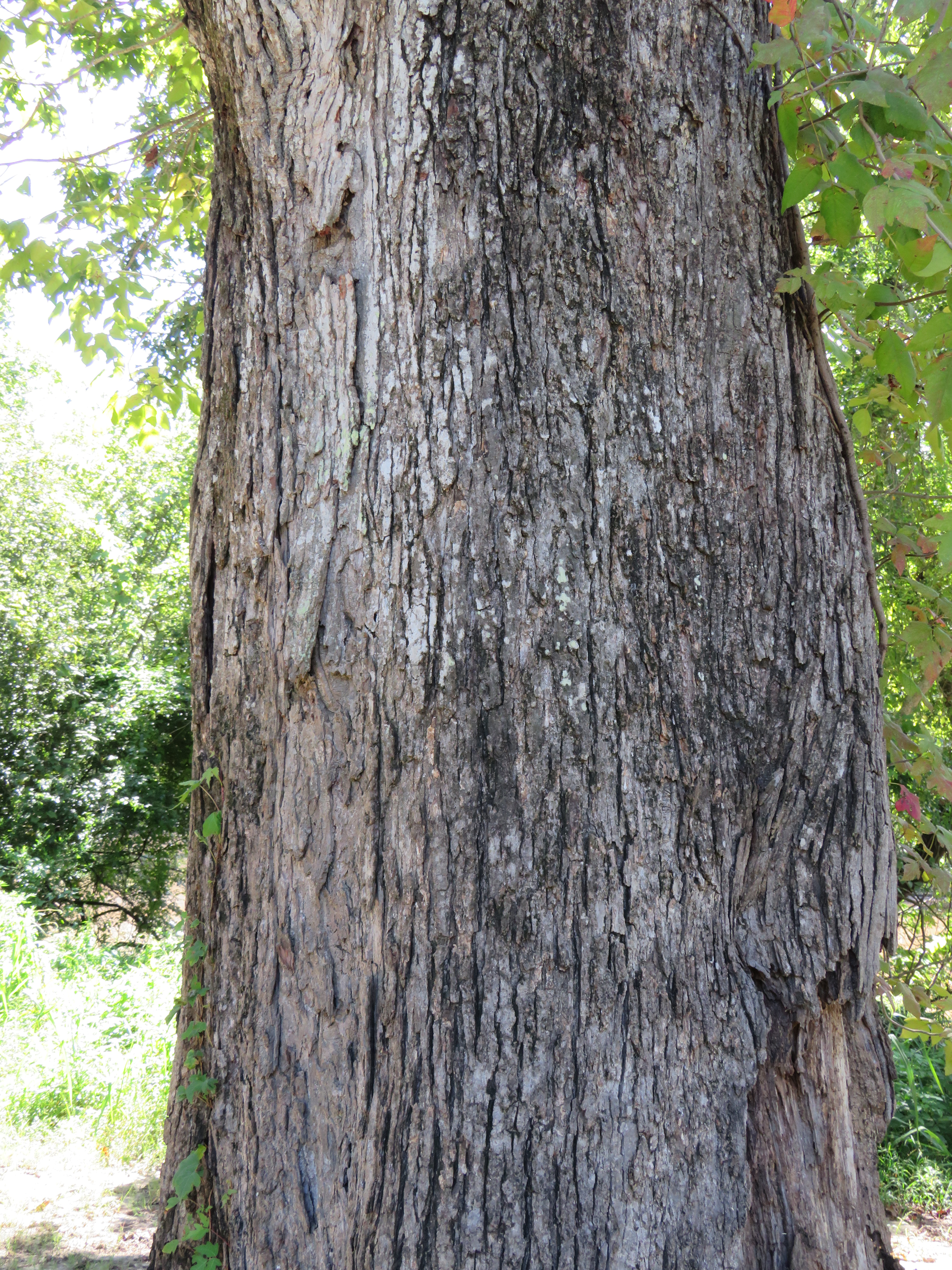
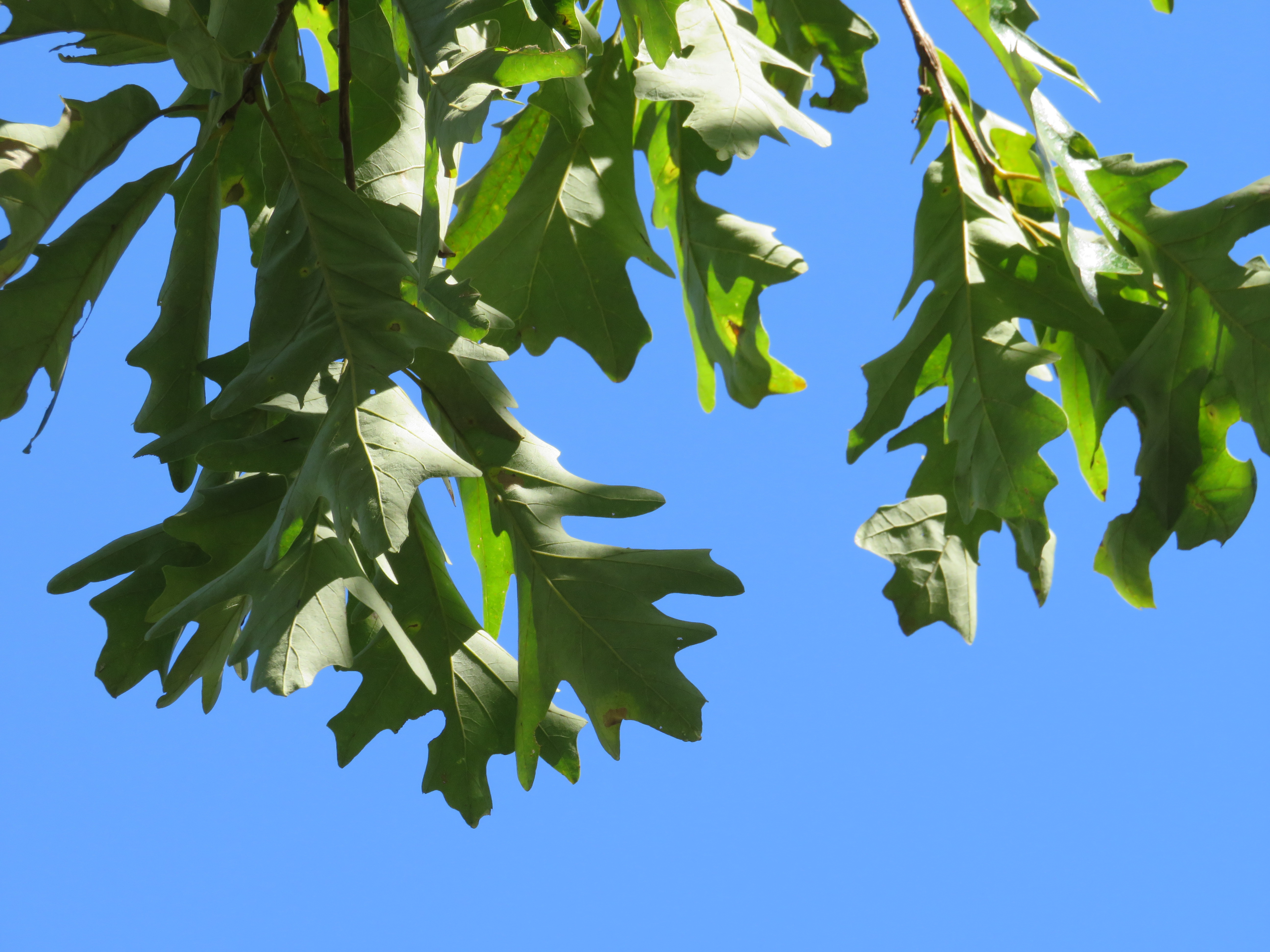 |
Overcup Oak - Quercus lyrata
A few specimens reside down in the floodplain forest. With its characteristic acorn cup (which envelopes the entire acorn), and wonderful
fall/winter foliage color (a mix of reds, oranges, yellows, and greens) the overcup is probably our most handsome oak. |
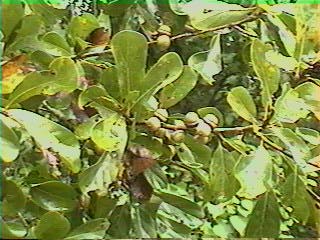
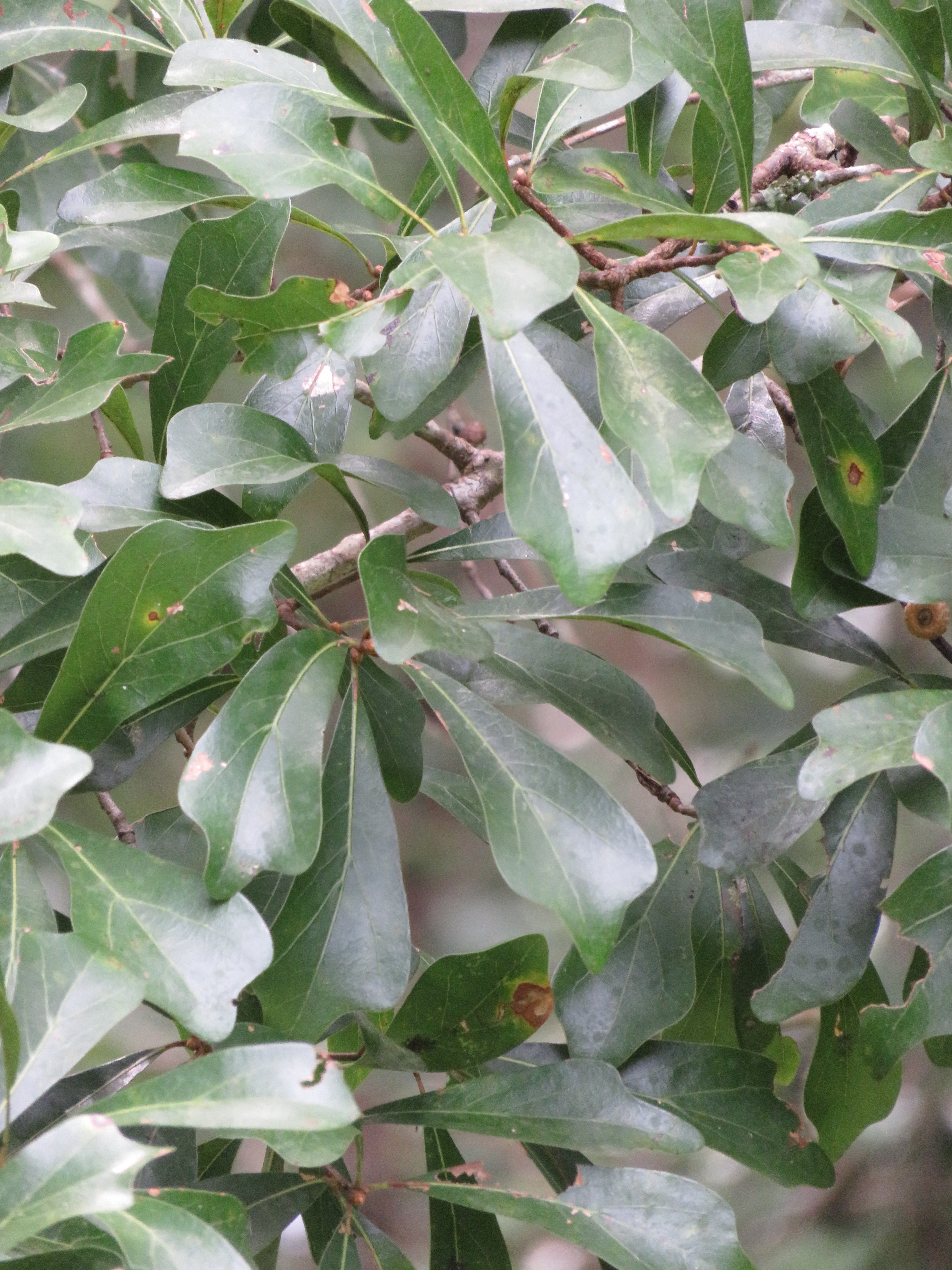
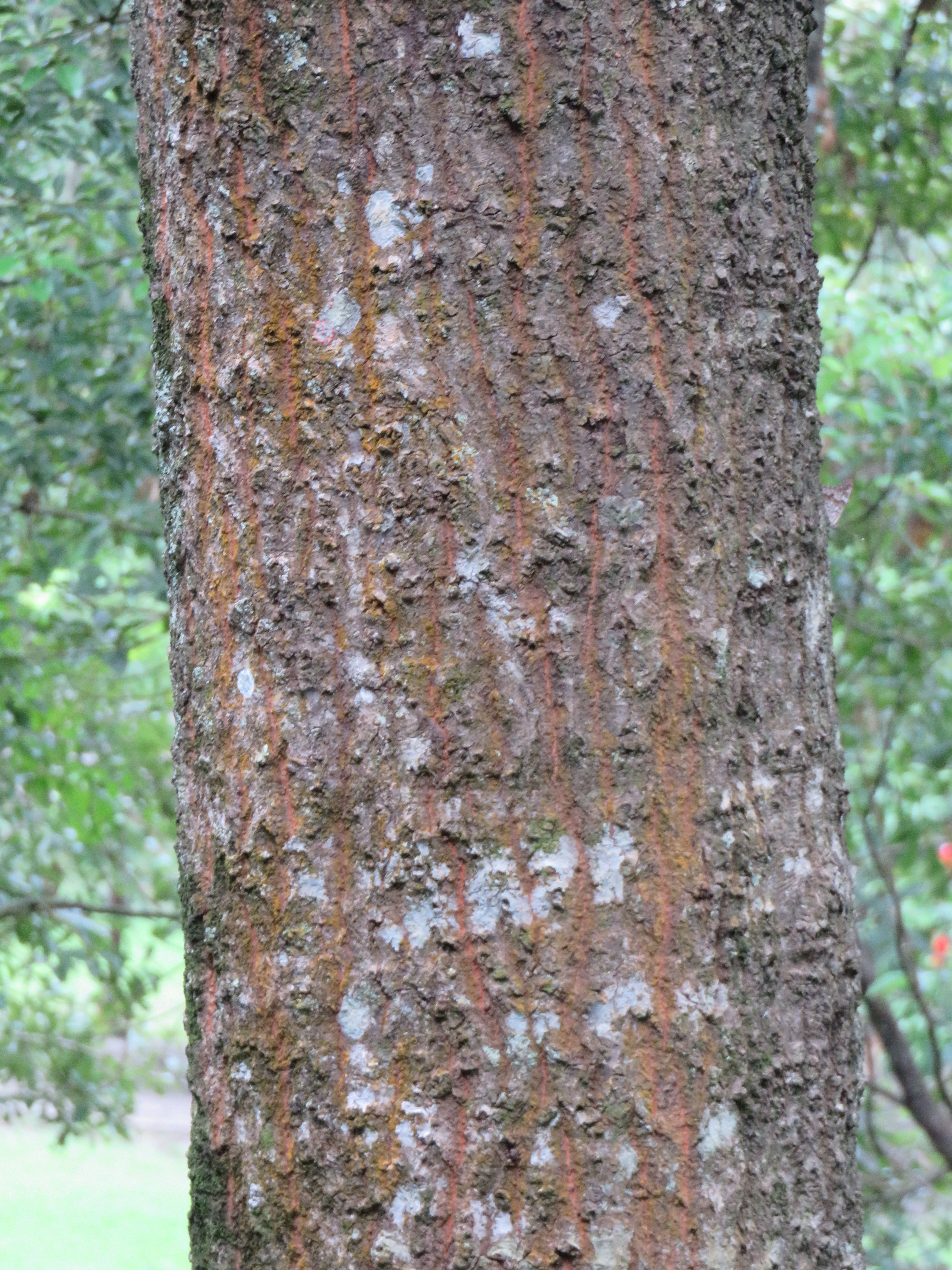
|
Water Oak - Quercus nigra
The most abundant tree species within the park, occupying all 3 major habitats here. Its propensity to "hollow out" at a relatively
young age, together with its normally copious acorn crop make it a very valuable species for birds and mammals alike. |
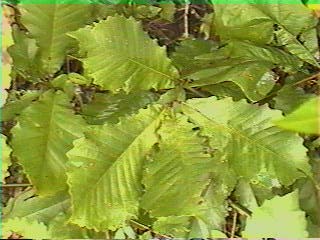 |
Swamp Chestnut Oak - Quercus michauxii
Restricted to the escarpment and the natural levee of nearby Bayou Vermilion. Its fancily scalloped leaves, large acorns, and dramatic crimson
fall foliage color make it a favorite of both humans and animals. Cattle also much appreciate its large nuts, and people still use its wood for
basket making here. Thus comes two additional colloquial names: "cow oak" and "basket oak". |
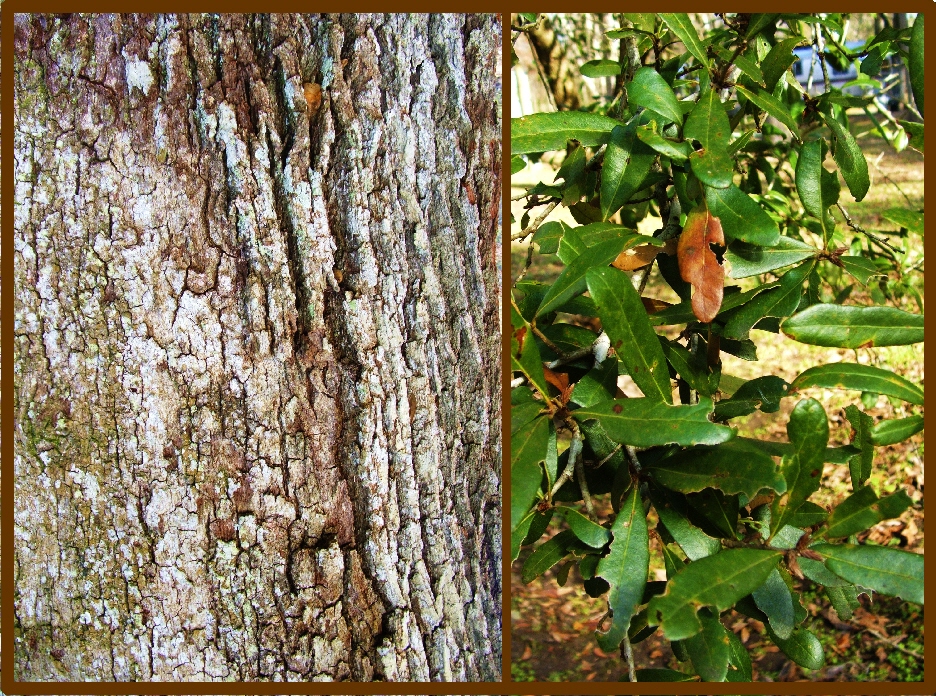 |
Live oak - Quercus virginiana
Called "chene vert" ("green oak") by the Cajuns, this is the signature tree of south Louisiana as well as the entire Gulf
Rim. This large, squatty, evergreen oak harbors hundreds of species of animals and plants (such as resurrection fern and spanish moss) on a year
round basis. |
Family Hamamelidaceae
 |
Sweet Gum - Liquidambar styraciflua; cajun=Copal (co-PALL)
Possesses star-shaped leaves, which make it easy to identify. Native Americans chewed the sweet inner bark of this species, thus providing it
with its common name. Additionally, this species produces prickly, spherical, modified seed cones called "sweet gum balls" which are
filled with tiny, nutritious seeds which squirrels, finches, and other animals relish. Sweet gum is found throughout all Acadiana Park habitats. |
Family Hippocastaneaceae
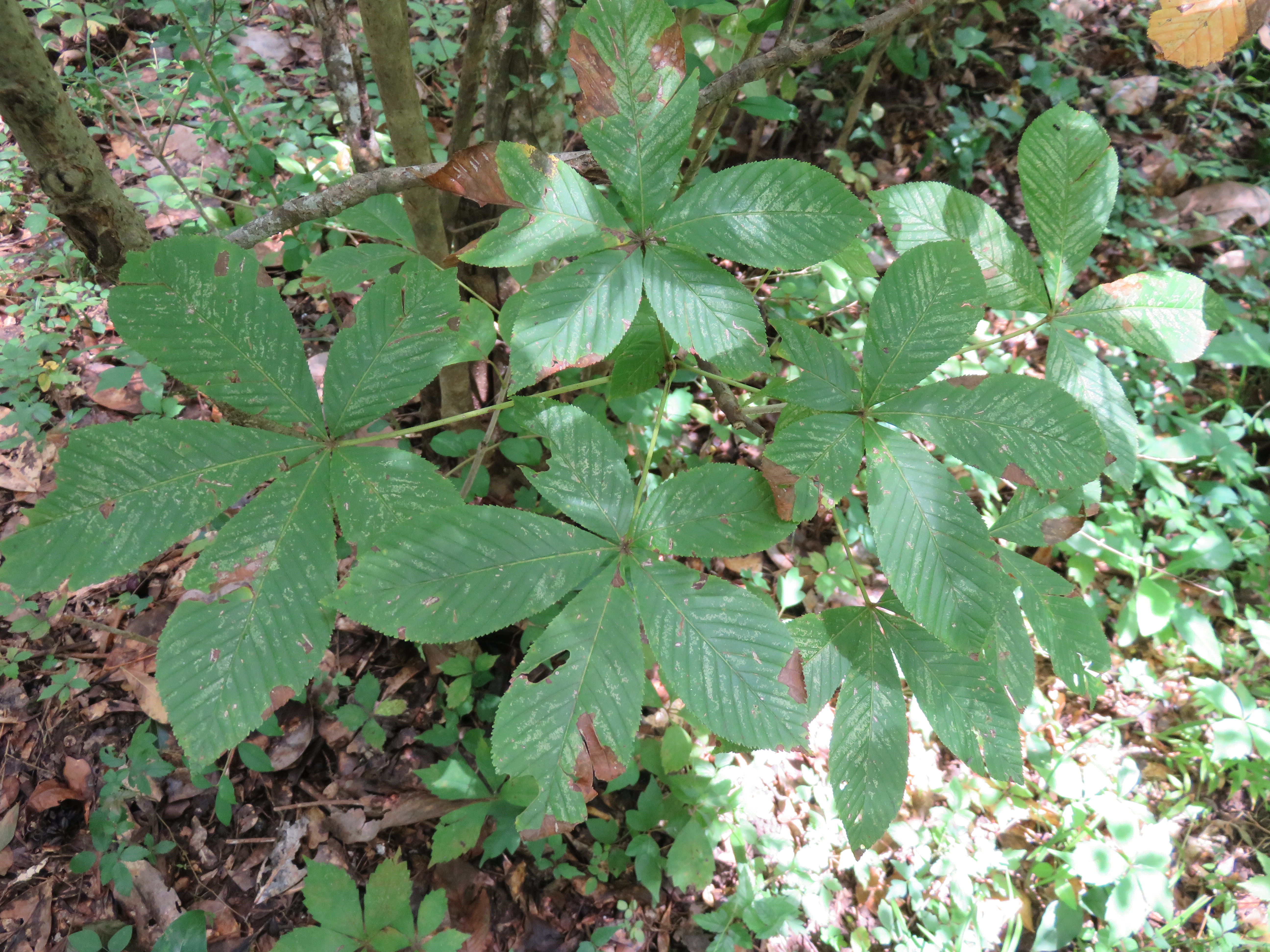 |
Red Buckeye - Aesculus pavia
Restricted to the escarpment forest only here at Acadiana Park. Its coral-colored, trumpet-shaped blooms appear in late March - just in time to
supply nectar for spring-migrating Ruby-throated Hummingbirds - and persist through much of May. |
Family Juglandaceae
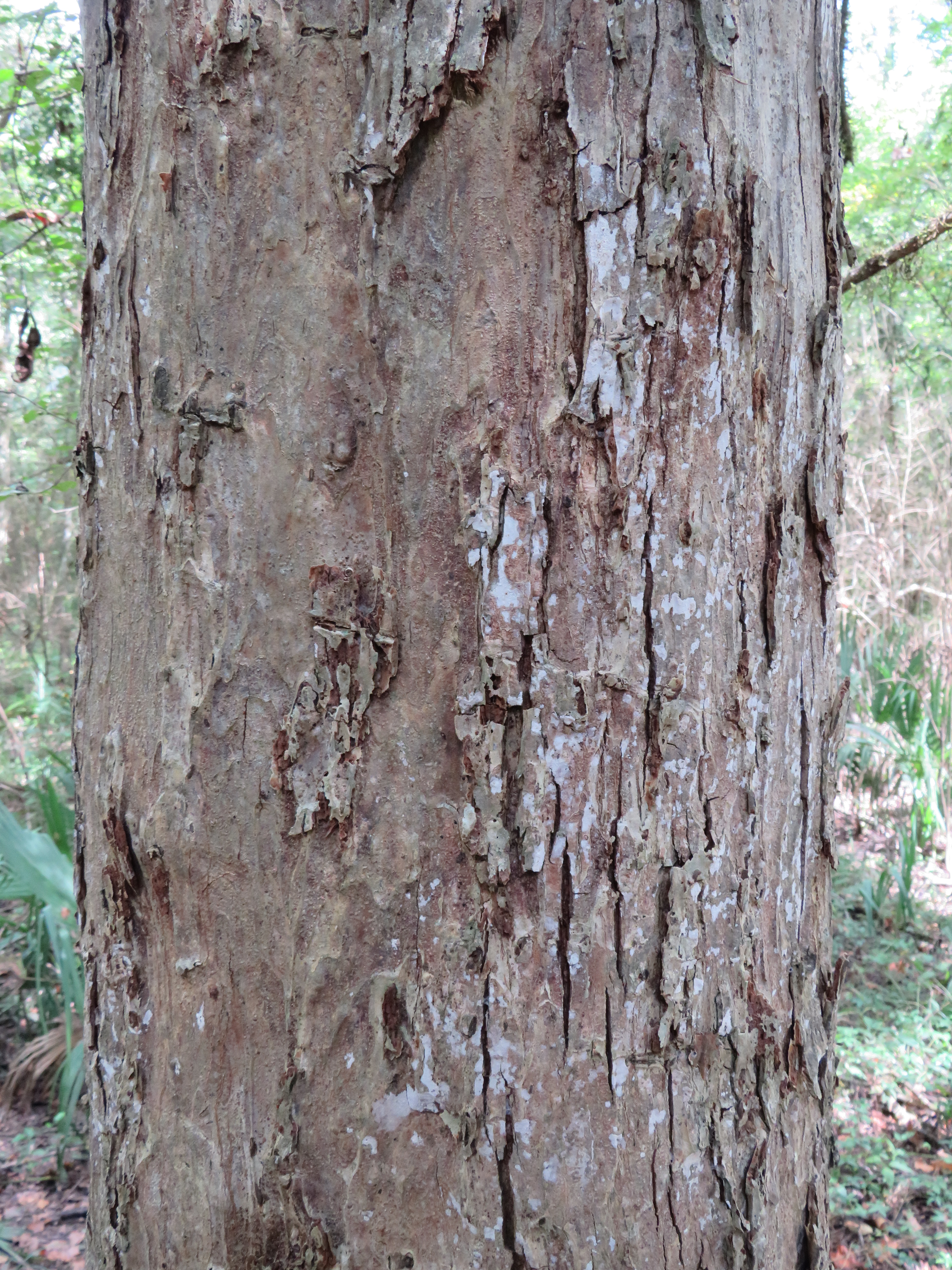
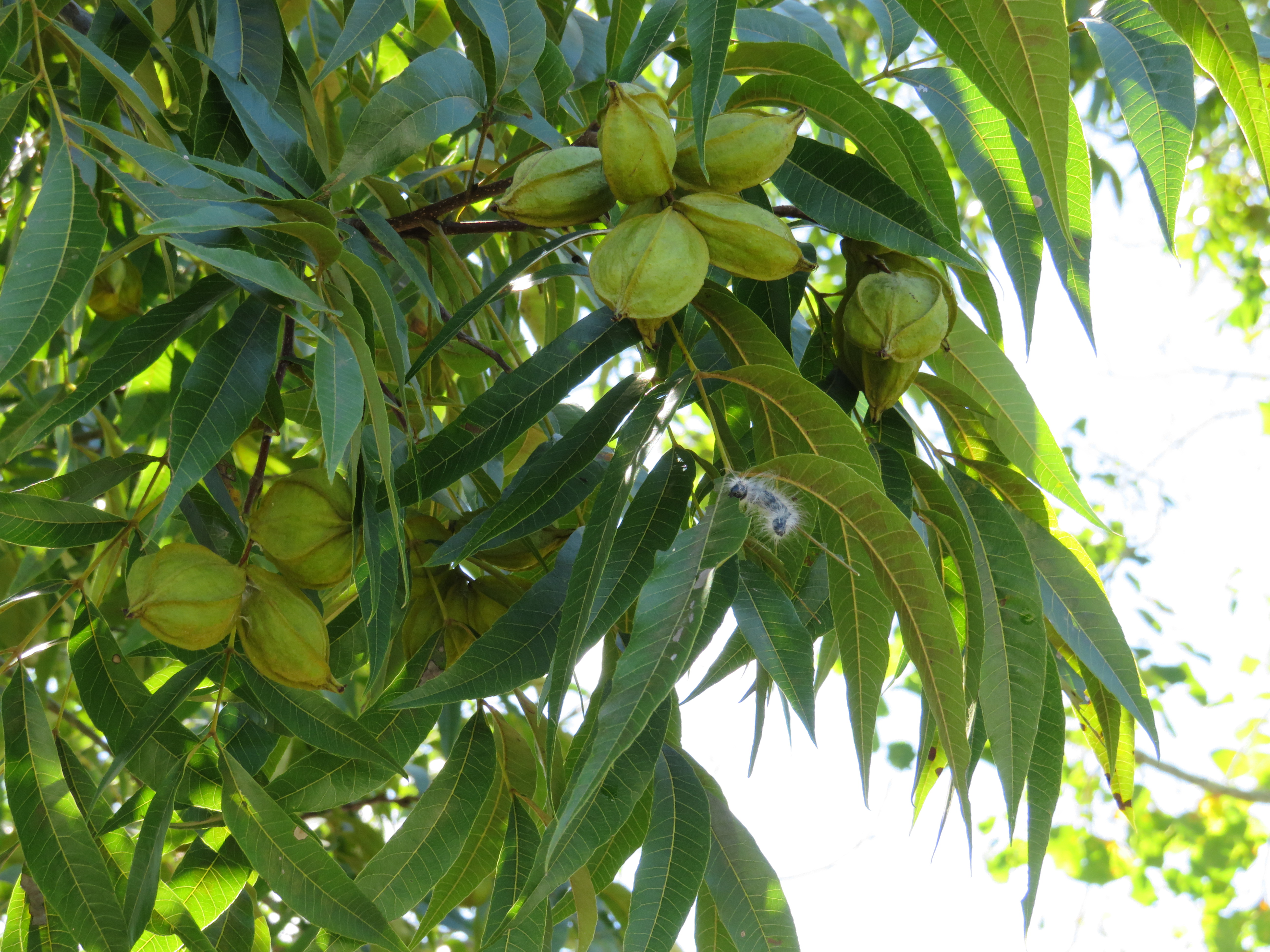
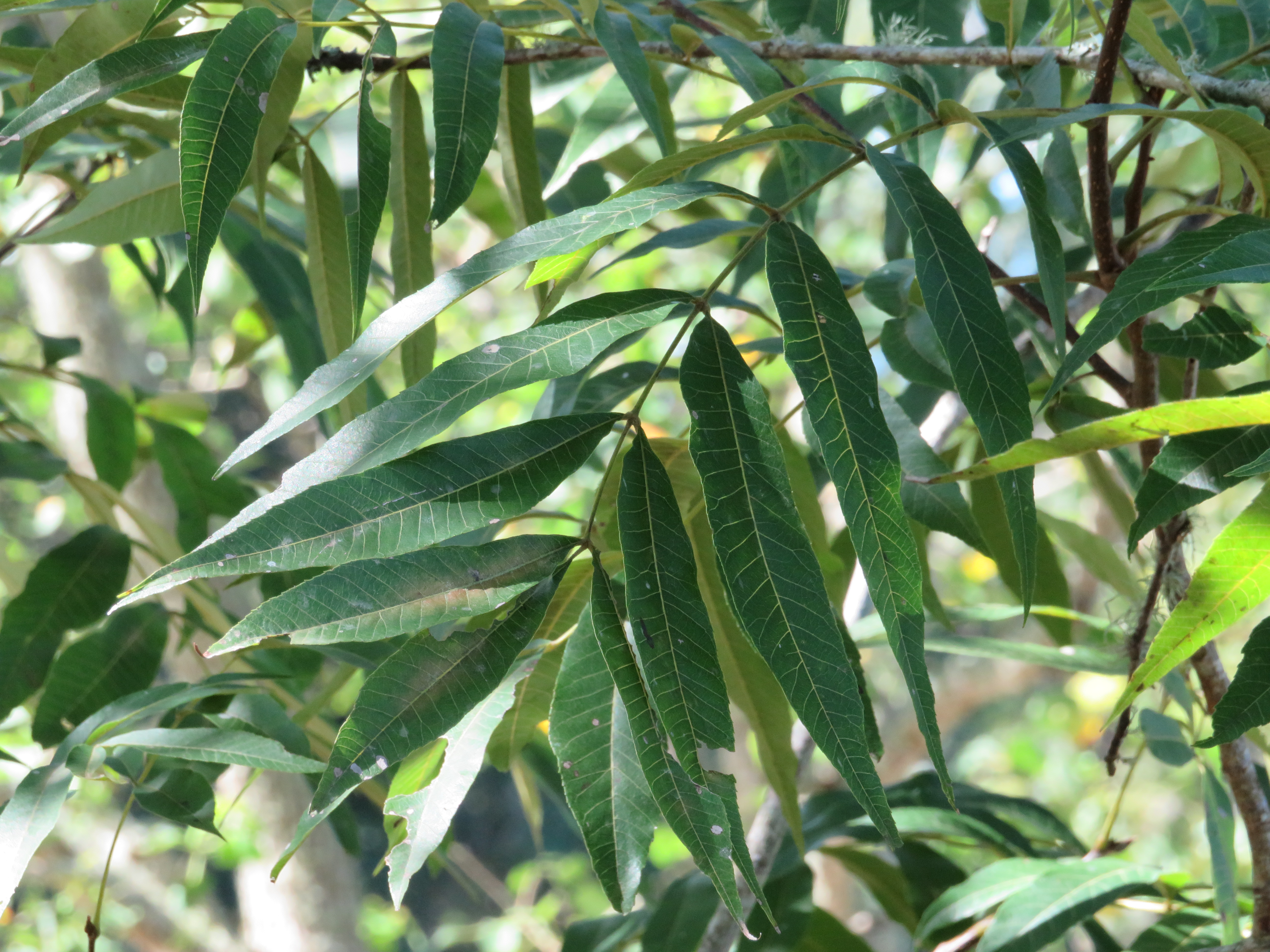 |
Water Hickory - Carya aquatica
Found abundantly within the floodplain forest, where it attains heights of up to 90'. Also known as "bitter pecan," water hickory
foliage closely resembles that of its close cousin, pecan (Carya illinoiensis). Its smallish, flattened nuts supply food for wood ducks and other
animals.
|
| |
Pignut hickory - Carya glabra
An uncommon inhabitant of the escarpment and adjoining levee forest of Bayou Vermilion. Heavily used by the local fox squirrel population, this species
also provides a fine source of brilliant orange-yellow fall foliage color. |
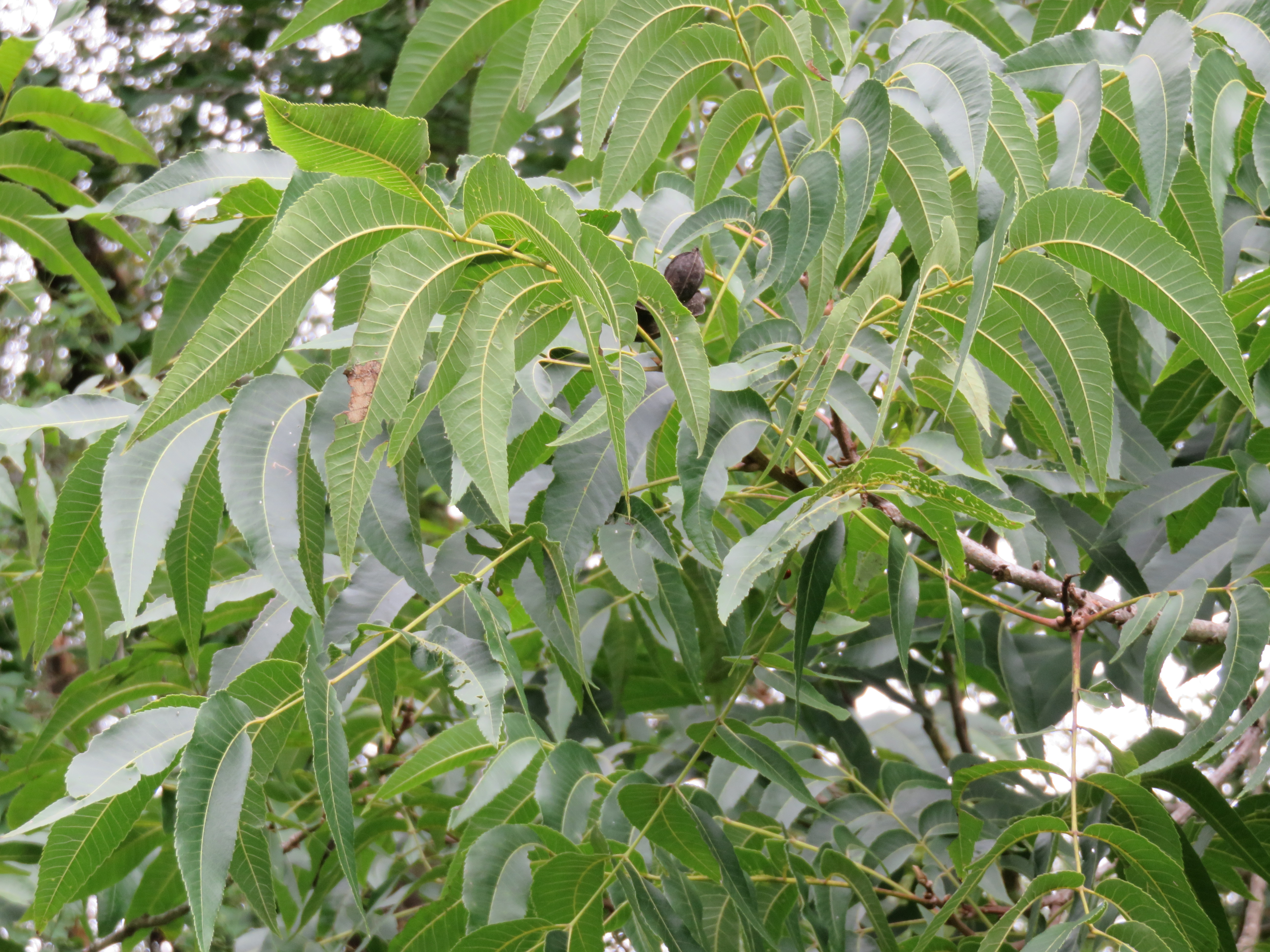 |
Pecan - Carya illinoiensis
Occurs abundantly along the old prairie terrace and down into the escarpment forest here at Acadiana Park. Along the lower reaches of the escarpment,
near where it joins with the floodplain, hybrid sweet/bitter pecan trees (Carya aquatica x illinoiensis) occur. During spring migration, sweet pecan
catkins (flowers) prove extremely attractive as "bug hosts" for transient vireos, warblers, and orioles. |
PAGE 2